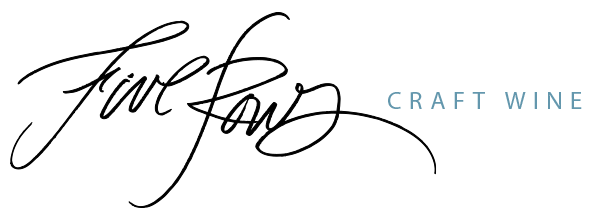2023 Sauvignon Blanc
As the first buds of 2023 started to push from their winter cocoons, the countdown was on to see whether the fickle new trunks we painstakingly established the previous summer were up to the task of supporting vegetative growth. It was a nervous, yet fascinating time to observe the delicate first spring growth of a Sauvignon Blanc grapevine.
We didn't have to wait long. The one thing about young trunks (young anything for that matter) is that they are vigorous and impatient. Two years’ worth of underutilized nutrient supply awaited the voracious and deep roots of these vines. Early season conditions were very conducive to growth, so much so that efforts were soon undertaken to balance the number of primary shoots on each new trunk. It can be difficult to summon the aggressiveness required when thinning these vigorous canes, especially the year after a light crop, but the alternative is a crowded and unruly canopy - no thanks!
The rebound season stretched on through the summer months, with more than adequate precipitation to support the now thriving vines. It became apparent that we were dealing with a bumper crop of large-berried clusters, so extra attention was paid to achieving proper fruit exposure and cluster spacing to combat fungal growth. Thankfully, a relatively dry and cool September resulted in super-clean fruit. The deficit in precipitation seemed to dilute the water status in the berries to the point where the intensity of flavours was more noticeable in the week leading up to harvest.
We chose to harvest our bountiful crop of Sauvignon Blanc on September 25th, and ended up with about 2300L of juice after the press cycle. After cold-settling the juice, it was racked into eight French oak barrels (80%) and one tank (20%). The barrels were of varying ages (2-15 years) and mostly neutral in their tannic contribution.
The vessels were warmed to 20°C and then inoculated with X5 yeast. Once fermentations were established, the barrels were cooled to 8°C for about two weeks, then allowed to warm again to finish. I find that pushing the lower end temperature limits of the yeast tends to maximize the aromatic intensity. One must be cautious, however, not to overly stress the yeast - it's a fine line!
The finished wine represents an amalgam of all the terroir-derived elements that Sauvignon Blanc enthusiasts would come to expect. It is less overtly opulent than the light-crop 2022 vintage, putting it more in line with a typical vintage like 2019 or 2021. Aromatically, there is an intense intermingling of tropical and citrus characters, with some typical Sauv Blanc gooseberry present as well. The TA for this wine is 7.9 g/L, which balances well with the 8 g/L of residual sugar and contributes to noticeable length on the palate.
This wine evokes a personal feeling of satisfaction and thankfulness, born out of the travails of re-establishing a beloved vineyard. Perhaps that is why I enjoy it so much. I hope this feeling of rejuvenation and joy is perceptible to all those that give it a try.
